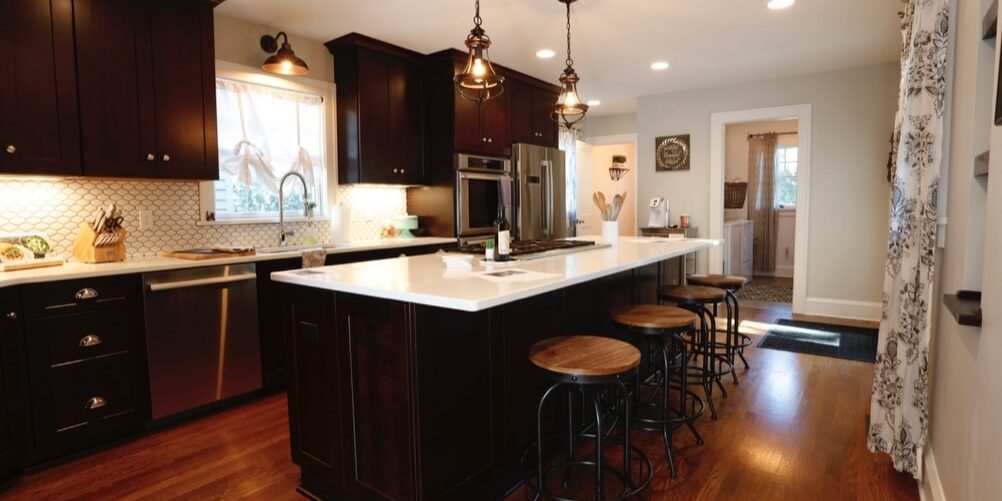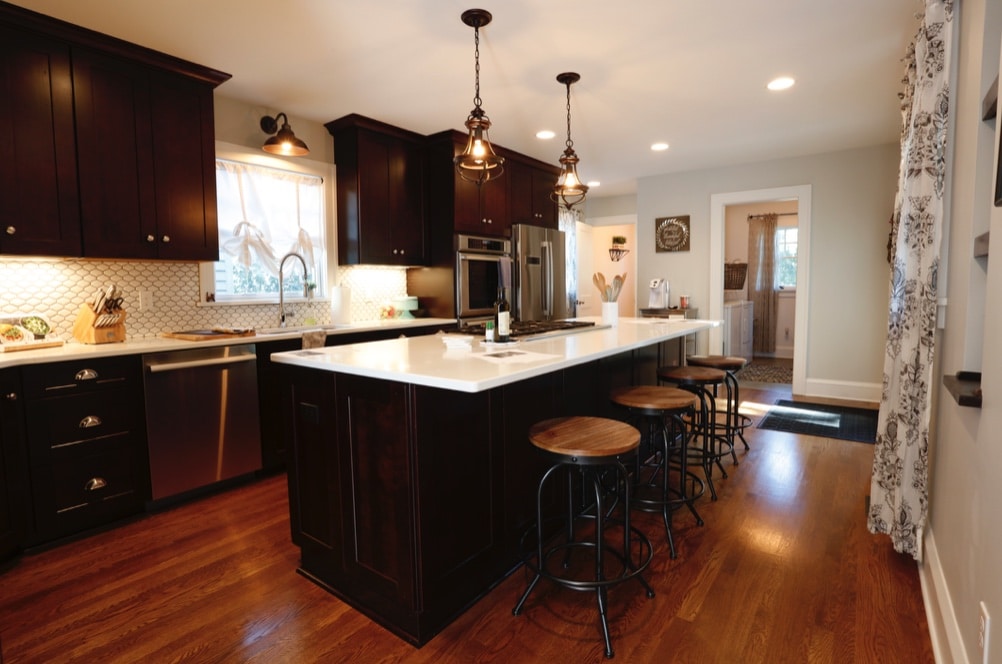Everything you need to know before buying hardwood flooring.
Whether your home style is traditional, contemporary, or somewhere in between, hardwood is a great choice in floor covering that stands the test of time. But with so many options, how do you choose the best product for your home application? It’s wise to educate yourself so you can arrive at a hardwood that meets your needs and expectations:
Hardwood 101. Most hardwood flooring is prefinished in a factory setting. A controlled factory environment is the perfect setting for product manufacturing with its filtered air, regulated humidity and temperature control: These elements allow manufacturers to produce pristine, high-grade hardwood flooring with exceptional quality and high durability.
The hardwood planks are stained, coated with multiple layers of UV-cured urethane (the UV process produces a harder, more durable surface). In addition to the urethane a final topcoat of aluminum oxide is applied directly or within the top layer of urethane, which encapsulates the layers below making the wood surface even more durable and scratch-resistant.
To determine a flooring’s hardness and durability, check it’s Janka Hardness rating—this industry-standard test measures the force required to embed an 11.28 mm steel ball into the wood. The higher the amount of force required, the higher the score, and the more durable the wood.
Dependent upon the environment, and being a natural product, every hardwood floor will scratch, dent and change in color to varying degrees. Scratches and dents are going to happen, particularly in high-traffic areas. Color change happens more readily in areas with regular or constant exposure. Window treatments and/or UV protectant glass can minimize color change from light exposure; also it is suggested when possible, to alter the furniture layout and occasionally take up area rugs or reposition to even the overall appearance of the floor. But as with any other flooring product, your home lifestyle is a factor: If you have a family of four with three dogs living in your home, you’ll likely see more wear than would a retired couple. As a general rule, most pre-finished hardwood flooring provides 10 to 20 years of wear, but many can last a lifetime!
Aesthetically pleasing? With hardwood, you get what you pay for: Better manufacturers produce a combination of long and short length planks, which can create a more attractive aesthetic. Bargain retailers often sell end lots, which can be a box of shorter boards full of character nots, fillers and / or the less desirable wood product. This look can create a choppy, busy appearance to the install—one that lacks the clean, harmonious look of a premium hardwood installation. It’s important to know the difference and determine the kind of look you’re going for prior to committing to a particular product and or retailer.
Refinishing existing hardwood floors. Solid hardwood and some engineered hardwood floors can be finished on site and re-finished again in the future. A homeowner considering whether to refinish or replace their existing hardwood floor should give some consideration to having to repeat the refinishing process again, somewhere in the near or distant future. The greatest challenge with finishing or refinishing on site is that a home is not a controlled environment: Moisture and humidity can affect the ability to achieve a uniform, clear finish. Site-applied finishes are normally warranted for three to five years, while factory applied finishes have warranties up to 25 years or more.
Solid vs. engineered hardwood. Most engineered hardwood planks are comprised of a plywood base or a wood fiber core, overlaid with a real hardwood veneer. Engineered hardwoods are designed to control and/or minimize expansion and contraction, which occurs in many homes due the environmental conditions inside or outside of a home – i.e. engineered hardwood is a better option for a home near a large body of water. Temperature, humidity, and construction (concrete slab/plywood substrate) all effect the way hardwood reacts and helps determine the best option for that particular application. The change of season can change the environment in a home, dryer conditions in the winter and increased humidity in the summer. Maintaining the recommended temperature and humidity is the first step in keeping your solid or engineered hardwood floor looking great.
A quality manufactured solid hardwood provides a classic, timeless feel and look to any home. Solid hardwood—with the ability to be refinished multiple times over its life—is a great option for many homeowners. As it is with all hardwood, when selecting a ¾” solid product choose a quality manufacturer, be conscious of the environment (location, temperature and humidity), and choose a board width between 3”- 4”, no wider than 5” is recommended. Solid hardwood is always worthy of consideration but as I see subtle changes in new home building and the desire for a wider more durable hardwood floor, the majority of the hardwood that we sell is engineered simply because of its stability and prefinished for durability and high-performance qualities.
In my next blog, I’ll cover the types of hardwood and installation tips. In the meantime, don’t hesitate to stop in at Dover Floor & Tile Center to discuss your flooring project.
Tschaun Procaccini







